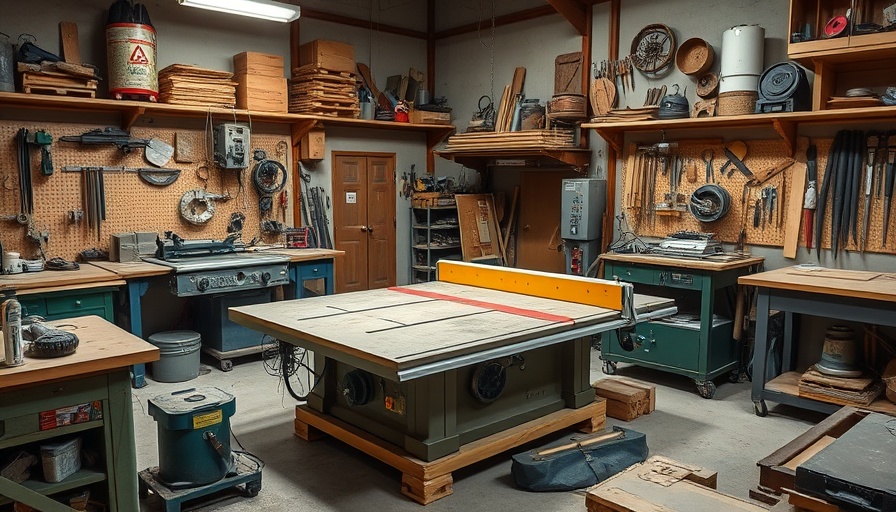
Mastering Your Table Saw: Gain Confidence and Precision
The table saw is an essential tool in any DIY enthusiast's workshop, offering versatility for various cutting tasks—from crosscuts to rip cuts. Yet, many novice woodworkers fear this powerful equipment perhaps due to its size, noise, and cutting edge speed. However, with the right knowledge and safety practices, you can wield this tool with ease.
Understanding the Table Saw: Key Components Explained
To harness the full power of a table saw, it’s vital to familiarize yourself with its components. Here’s a brief overview:
- On/Off Switch: Familiarize yourself with the location of the power switch, which may be situated for quick access in emergencies.
- Throat Plate: This removable piece allows access for maintenance while preventing debris from falling into the blade housing.
- Blade Guard and Riving Knife: Each plays a crucial role in ensuring safety by covering the blade and minimizing the risk of kickback.
- Arbor: Holds and spins the blade—important to check its tightness before use.
- Table: A stable surface where you place your materials, ensuring solid support for all cuts.
- Miter Slots and Rip Fence: These components guarantee straight cuts and accuracy, with alignment being critical for safety.
Safety First: Table Saw Best Practices
Safety should always be your top priority. Here are practices to foster a safe working environment:
- Always wear appropriate safety gear—gloves, goggles, and hearing protection.
- Keep hands clear of the blade; use push sticks or other tools to guide wood through the saw.
- Check your saw's settings before starting to ensure everything is aligned and secure.
Common Misconceptions About Table Saws
Newbies often harbor fears about table saws, such as the belief they are only for seasoned woodworkers. In reality, with proper guidance and practice, beginners can learn to use them safely and effectively. Additionally, many believe you can’t make intricate cuts, but with suitable adjustments and tools, this is certainly possible.
Practical Tips for Successful Cuts
With these pointers in mind, you can approach your projects with confidence. For instance, when making rip cuts, always ensure that your material is firmly secured against the rip fence to avoid any movement. Additionally, practice on scrap wood before attempting your actual project to hone your technique.
Embarking on DIY Projects with a Table Saw
Once you feel comfortable operating the table saw, the possibilities for DIY home projects become endless. From creating custom furniture to enhancing your home's decor, a table saw opens the door to creativity. Why not start by designing a rustic farmhouse table or a sleek modern bookshelf?
Conclusion: Harness the Power of Your Table Saw
Ultimately, understanding how to properly use a table saw can significantly enhance your DIY skills and home improvement projects. Dive into your next project armed with knowledge, practice safety, and unleash your creativity!
 Add Row
Add Row  Add
Add 




Write A Comment